If you are a regular visitor to galleries and museums that show contemporary art, the question, “So we are now allowed to call this art?” is implicit in much of what you see. As viewers, we have become so jaded, and so overexposed to visual information, that we expect to see works that challenge our expectations. When we see paintings, photographs, sculptures or even installations or videos, we are quickly able to file them away into the correct mental categories, but at the same time, we may also be thinking, “That was interesting, but it was just a three-channel video.” When art becomes too easy, we are left wanting for that feeling of not quite understanding what we just saw. When viewing contemporary art, this question of “not knowing” has become the real expectation. You could perhaps call this a desire for naive fascination.
At the Taipei Biennial 2014, which opened last weekend at the Taipei Fine Arts Museum and is curated by French scholar Nicolas Bourriaud, you will find that instances of naive fascination abound. The exhibition contains works by 52 artists from every populated continent except Australia. Most of them are young. Few are famous, though some — Laure Prouvost, who won the 2013 Turner Prize, Korean artist Yang Hae-gue, Belgian Peter Bruggenhout, Taiwan’s Peng Hung-chih (彭弘智 ) and a few others — are reasonably well known in international art circles.
If most of the artists are not art stars, they are youthful, energetic and generally prefer an intuitive approach to an intellectual or conceptual one. Some works are perhaps intentionally dumb, like Nathan Mellors’s video, Neanderthal Container (2014), of a person in a thrift-store neanderthal mask who swears incoherently and several times gets thrown out of an airplane (without a parachute). Other works are fiercely incisive, like the late Swedish artist Ola Pehrson’s project Yucca Invest Trading Plant (1999), in which a yucca plant plays the stock market via electrodes hooked up to a computer. (After a month of actual trading, “it didn’t lose a dime,” said biennial curator Bourriaud.)
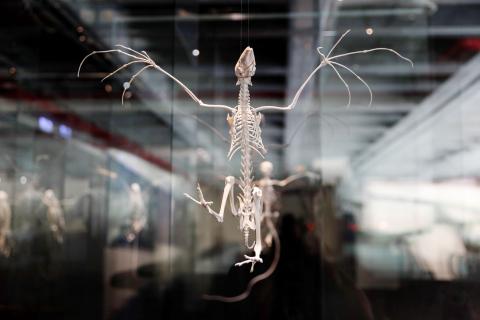
Photo courtesy of TFAM
As a group, the artworks include all sorts of arresting facets: a hot tub containing ceramic eels, fake puddles made of plastic resin and garbage, video animations of a man throwing poo, a real dried penis (it doesn’t say whether or not it’s human), a video of bugs dipped in ink and perhaps dying as they squirm across a sheet of paper, and wall plaques with quizzical inscriptions, like, “Ideally here would be the smell of the deep sea invading the room.”
One of the most intriguing pieces is an installation accessed by a small door in the corner of a second-floor gallery that looks like it was left open accidentally. It leads into an office with two cubicles, where bookshelves are full of fake titles, presumably parodies of esoteric scholarship, such as “I Abhor All Trades”, “Shoulder Pads and Buzz Cuts” and “Phantasm du Jour.” A door from the back of this office leads to a sort of work space where it seems that exhibitions are prepared. If you walk even deeper into this “behind-the-scenes” labyrinth, you will find a secret lounge. Its walls are painted teal and it contains four operating massage chairs, terrariums, a fountain and Bollywood pin-up posters. (I recommend the massage chairs.)
The installation is by American artists Jonah Freeman and Justin Lowe and titled The Floating Chain (Fake Wall). A companion video installed on another floor of the museum, The Floating Chain repeats imagery from the installation, interspersed with more visually rich, non-referential clips. In both works, the experience is of making some kind of weird discovery, though of what you’re not really sure.
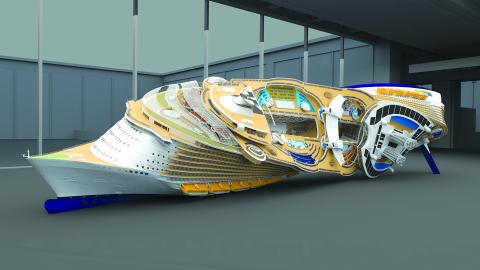
Photo courtesy of TFAM
RELATIONAL AESTHETICS
As a curator, Bourriaud is known for a post-modern approach that views artworks as more than simple objects. In 1998, he introduced the idea of “relational aesthetics,” which has gone on to become one of the most compelling theories for art that relies on process, social interventions, behaviors and interactivity — forms that became widespread in the 1990s.
Bourriaud believes that artworks contain a dynamic that extends to both time and space. In the 1990s, he saw artists rejecting sculpture, painting and other objects because they were static forms destined only for “aesthetic consumption.” As a revolt against commodification, artists turned to “relational forms” including “meetings, encounters, events ... and all manner of encounter.”
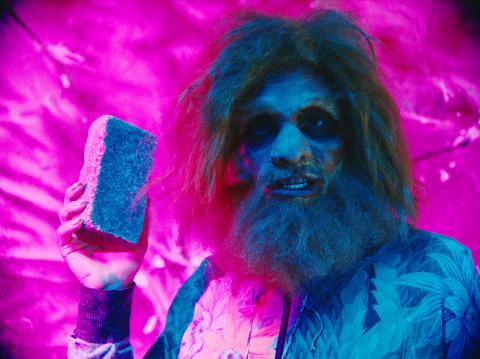
Photo courtesy of TFAM
Bourriaud is currently director of France’s top arts college, Ecole des Beaux-Artes in Paris. He has also honed his curatorial skills at the highest level — as co-founder and director of the Palais de Tokyo in Paris, as a curator at London’s Tate Modern, and helming biennials at the Tate, in Moscow and in Athens. He is the author of four books on art theory, including Relational Aesthetics, Postproduction and his most recent, Radican.
For the 2014 Taipei Biennial, Bourriaud claimed he simply wanted to create an exhibition by installing works in the museum’s galleries. In other words, there are no satellite events or works outside the museum as in past Taipei Biennials. There are no actions that extend out into the community. Nothing local is appropriated as art. There are no works that rely on documentation, or section curators, or mini-museums as there were in 2012. The issue of Taiwanese identity is not addressed.
As odd as this may seem coming from the arch-proponent of relationality, the works in the current biennial are for the most part the artists’ direct creations or connivances.
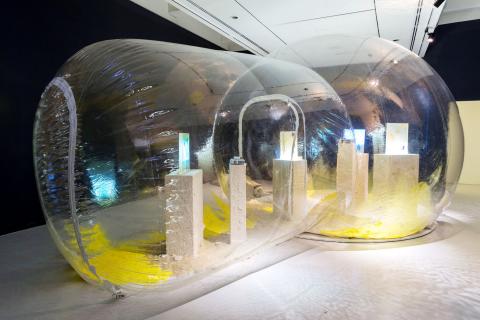
Photo courtesy of TFAM
“I thought it was interesting to differentiate completely from the previous one. Not as a criticism of it, but just as a way to do something else,” Bourriaud said.
“I avoided this notion of identity, because we are actually addressing the question of mutating identities, which I think is actually more relevant to the period of time we live in. We are more dealing with what is it to be a human being in relation to machines, to plants, to the sea and so on,” he said.
Bourriaud has titled the exhibition “The Great Acceleration”, referring to the accelerated change now taking place in industrialization, technology and the earth’s environment. In his curator’s statement, he asserts that “the structure of the planet itself is being modified by humans” and that the level of automation is so intense that humans have become estranged from the earth itself and the physical reality that surrounds us. The result is “the collapse of the ‘human scale,’” so that every individual is “reduced essentially to the ‘data’ that constitute the major part of their presence in the economic system.”

Photo courtesy of TFAM
This theoretical statement, however, is meant to operate in parallel to the art, and not necessarily as a way of interpreting it.
“Art works are never here in my exhibitions to illustrate what I do,” said Bouriaud.
Bourriaud claims that his own ideas are presented as a “subtext” that provide the potential for dialogue with the artworks. His main interest, he says, is how “the ideas bounce from one place to another.”
And indeed they do. The 2014 Taipei Biennial is both conceptually rich and a experientially piquing. As biennials go, it is a fantastic exhibition. And yet, as is true with so many contemporary exhibitions, so little of the work is memorable.
BUT IS IT ART?
To return to the question posed at the beginning of this article — “So we are now allowed to call this art?” — the reality is that it is no longer a question, because the answer has become all too obvious. If it’s in a museum, of course it is art. We no longer really ask ourselves, because we know we are being told.
As the critic Keti Chukhrov recently observed, contemporary art now exists in a “condition of hyper-institutionalization, in which art practice itself is subsequent to the institution.” In other words, the museums and white-cube galleries now come before the art, and artists make work with the gallery as its only intended destination.
How else could we imagine a work like The Floating Chain (Fake Wall)? In a broader sense, this kind of question is opening up one of the key critiques of relational art. Relationality has certainly opened up all kinds of diverse possibilities, but outside an institutional setting, how else could it exist?
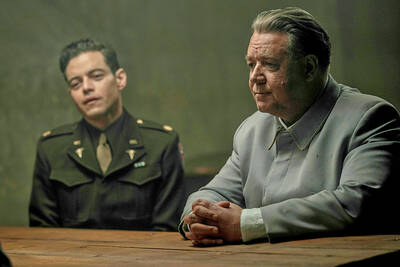
The Nuremberg trials have inspired filmmakers before, from Stanley Kramer’s 1961 drama to the 2000 television miniseries with Alec Baldwin and Brian Cox. But for the latest take, Nuremberg, writer-director James Vanderbilt focuses on a lesser-known figure: The US Army psychiatrist Douglas Kelley, who after the war was assigned to supervise and evaluate captured Nazi leaders to ensure they were fit for trial (and also keep them alive). But his is a name that had been largely forgotten: He wasn’t even a character in the miniseries. Kelley, portrayed in the film by Rami Malek, was an ambitious sort who saw in

It’s always a pleasure to see something one has long advocated slowly become reality. The late August visit of a delegation to the Philippines led by Deputy Minister of Agriculture Huang Chao-ching (黃昭欽), Chair of Chinese International Economic Cooperation Association Joseph Lyu (呂桔誠) and US-Taiwan Business Council vice president, Lotta Danielsson, was yet another example of how the two nations are drawing closer together. The security threat from the People’s Republic of China (PRC), along with their complementary economies, is finally fostering growth in ties. Interestingly, officials from both sides often refer to a shared Austronesian heritage when arguing for
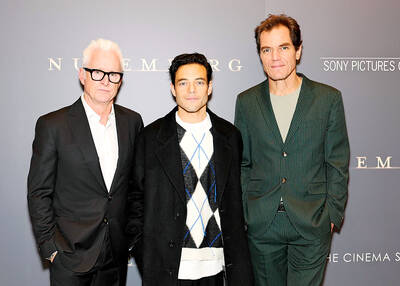
Among the Nazis who were prosecuted during the Nuremberg trials in 1945 and 1946 was Hitler’s second-in-command, Hermann Goring. Less widely known, though, is the involvement of the US psychiatrist Douglas Kelley, who spent more than 80 hours interviewing and assessing Goring and 21 other Nazi officials prior to the trials. As described in Jack El-Hai’s 2013 book The Nazi and the Psychiatrist, Kelley was charmed by Goring but also haunted by his own conclusion that the Nazis’ atrocities were not specific to that time and place or to those people: they could in fact happen anywhere. He was ultimately

Last week gave us the droll little comedy of People’s Republic of China’s (PRC) consul general in Osaka posting a threat on X in response to Japanese Prime Minister Sanae Takaichi saying to the Diet that a Chinese attack on Taiwan may be an “existential threat” to Japan. That would allow Japanese Self Defence Forces to respond militarily. The PRC representative then said that if a “filthy neck sticks itself in uninvited, we will cut it off without a moment’s hesitation. Are you prepared for that?” This was widely, and probably deliberately, construed as a threat to behead Takaichi, though it